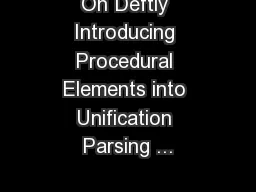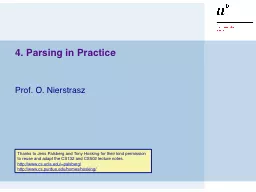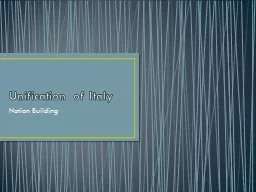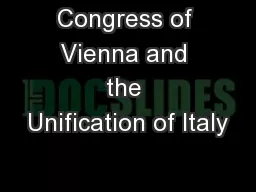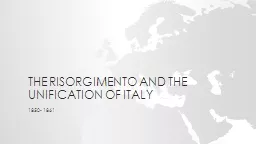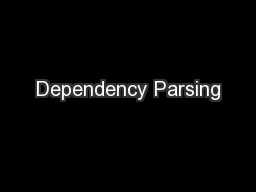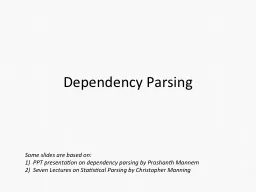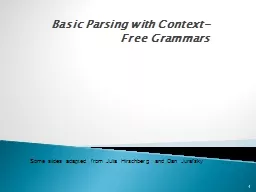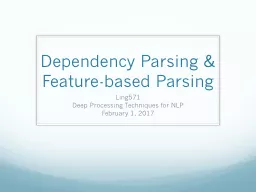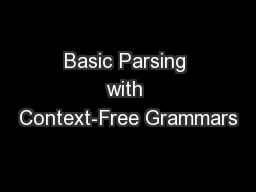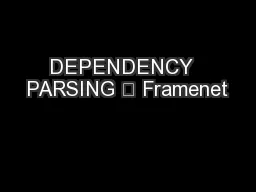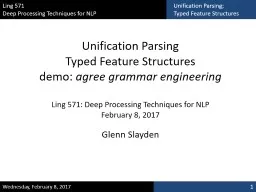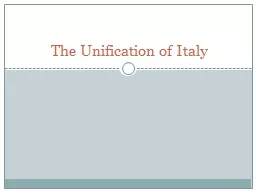PDF-On Deftly Introducing Procedural Elements into Unification parsing
Author : kittie-lecroy | Published Date : 2017-08-13
Bobrow Lance Ramshaw BBN Systems and Technologies Corp 10 Moulton Street Mailstop 64C Cambridge MA 02138 1 Introduction Unification grammars based on complex feature
Presentation Embed Code
Download Presentation
Download Presentation The PPT/PDF document "On Deftly Introducing Procedural Element..." is the property of its rightful owner. Permission is granted to download and print the materials on this website for personal, non-commercial use only, and to display it on your personal computer provided you do not modify the materials and that you retain all copyright notices contained in the materials. By downloading content from our website, you accept the terms of this agreement.
On Deftly Introducing Procedural Elements into Unification parsing: Transcript
Download Rules Of Document
"On Deftly Introducing Procedural Elements into Unification parsing"The content belongs to its owner. You may download and print it for personal use, without modification, and keep all copyright notices. By downloading, you agree to these terms.
Related Documents


